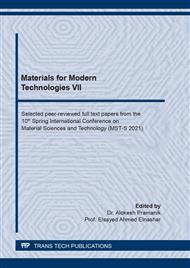p.19
p.28
p.39
p.49
p.59
p.65
p.74
p.84
p.93
Design and Analysis of Hot Forming Parts with Extra Thick Specification
Abstract:
The press hardening steel with thick specification has been used as automobile chassis parts. With the increase of the thickness, the cooling rate of the inner core is lower in the conventional process, resulting in a poor harden ability, and the fatigue test is not qualified. In this study, the microstructure of hot forming parts with thick specifications was studied by means of metallographic and micro-hardness testing. The results show that there is a microstructure gradient in the thick hot forming parts, which leads to the uneven strength in the cross section and finally affects the fatigue test results.The finite element analysis method is used to study the cooling rate of the inner core of the hot forming parts. The high hardenability press hardening steel products has been prepared by adjusting the components.
Info:
Periodical:
Pages:
59-64
Citation:
Online since:
April 2021
Authors:
Price:
Сopyright:
© 2021 Trans Tech Publications Ltd. All Rights Reserved
Share:
Citation:


